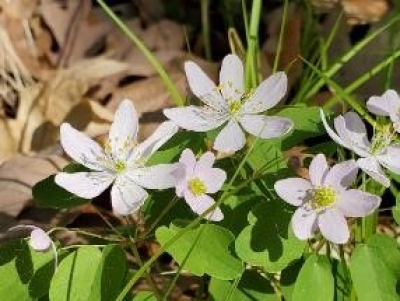Effective plant selection, establishment and management plays an essential role in the success of conservation projects. BWSR's Native Vegetation Establishment and Enhancement Guidelines and related technical documents have been developed to help ensure project success.
BWSR has developed and refined these guidelines, beginning in 2010, to assist resource professionals and landowners across Minnesota in meeting state vegetation policies and standards and to guide the successful planting and management of restoration and other conservation projects. The Guidelines are also designed to:
- Develop consistency among state programs;
- Avoid the use or introduction of invasive species; and
- Ensure that plantings function at a high level and meet project goals.
These guidelines apply to all BWSR programs that have vegetation restoration components, as well as other state programs that have adopted or reference the guidelines. Some BWSR grants and programs must follow the seed and plant source sequence listed in Section 2 of the Guidelines. These requirements, along with specific exceptions, are listed in Exhibit A of each grant agreement. Other topics in the Guidelines include recommended planting dates, diversity levels, and planting guidance by project type.
The Guidelines are updated periodically; they were reviewed in 2024 by an advisory team of conservation partners (see Vision for Native Vegetation and Biodiversity) and by grants and program staff to ensure consistency with BWSR grant, easement and wetlands program policies and guidance. The 2025 update of the Guidelines includes changes to the maximum source distances for native seed and plants (see Section 2). Planting of state noxious weeds is prohibited. Other comments and suggestions have been incorporated into the chapters and factsheets in the drop-downs below. Individual project type factsheets will be updated periodically as new information becomes available. Further comments and suggestions are always welcome.
- Section 1: Purpose and Applicability
Summarizes the applicability of the guidelines to BWSR programs and to related state and federal standards, the benefits of native vegetation. and guiding principles for restoring resilient landscapes.
- Section 2: General Planning Considerations
Considerations for seed and plant source, diversity levels, cultivar use, protecting plant communities, preventing the introduction of invasive species and planting and management strategies for climate change.
- Section 3: Project Site Preparation, Planting and Maintenance
Key considerations for each phase of the vegetation establishment process.
Section 3: Project Site Preparation, Planting and Maintenance (pdf)
- Section 4: Standards and Guidance by Project Type
Factsheets summarizing plant selection, planting and management considerations for different project types. Factsheets were updated in August 2025, and will continue to be updated as needed.
Agricultural Conservation Practices (pdf)
Agricultural Forestry Practices (pdf)
Forest Establishment and Management Practices (pdf)
Native Prairie Reconstruction (pdf)
Remnant Prairie and Savanna Restoration (pdf)
Raingardens, Biofiltration and Vegetated Swales (pdf)
River and Stream Bank Stabilization (pdf)
Temporary Cover for Restoration (pdf)
- Section 5: Appendices
Appendix A: Preventing Palmer Amaranth and Other Noxious Weeds in Conservation Plantings

